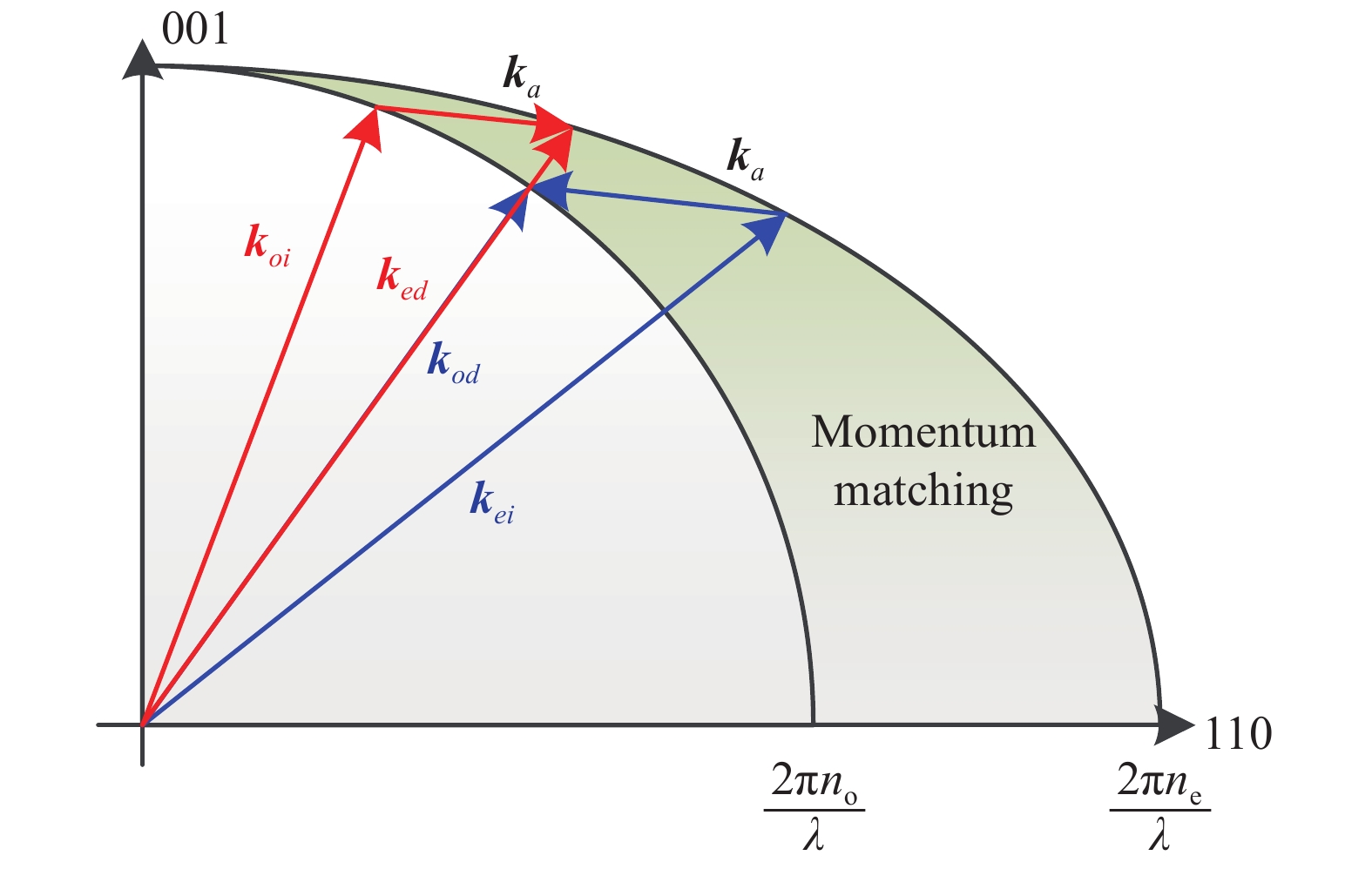Zefu Xu, Huijie Zhao, Guorui Jia. Influence of the AOTF rear cut angle on spectral image quality[J]. Infrared and Laser Engineering, 2022, 51(7): 20210590
Search by keywords or author
- Infrared and Laser Engineering
- Vol. 51, Issue 7, 20210590 (2022)

Fig. 1. Wave vector layout of momentum matching

Fig. 2. Acousto-optic interaction of non ideal sound beam
Fig. 3. Acousto-optic interaction of AOTF and dispersion of rear cut angle
Fig. 4. (a) Response of spectrum-space dimensional (red line), spectral response (blue line), spatial response (green line) at 59.6 MHz (central wavelength 750 nm); (b) MTF curve, blue line is Fourier transform of 59.6 MHz spatial response, red line is measured MTF by oblique knife edge target; (c) Deviation between the measured MTF and the theoretical MTF @59.6 MHz; (d) Spectral image of 59.6 MHz; (e) Response of spectrum-space dimensional (red line), spectral response (blue line), spatial response (green line) at 99.4 MHz (central wavelength 500 nm); (f) MTF curve, blue line is Fourier transform of 99.4 MHz spatial response, red line is measured MTF by oblique knife edge target; (g) Deviation between the measured MTF and the theoretical MTF @99.4 MHz; (h) Spectral image of 99.4 MHz
Fig. 5. (a) MTF of 59.6 MHz (central wavelength 750 nm) with different rear cut angles; (b) MTF of 99.4 MHz (central wavelength 500 nm) with different rear cut angles
| ||||||||||||||||||||||||||||||||||||||||||||||||||
Table 1. MTF30 with different rear cut angles at 99.4 MHz (center wavelength 500 nm) and 59.6 MHz (center wavelength 750 nm)

Set citation alerts for the article
Please enter your email address



